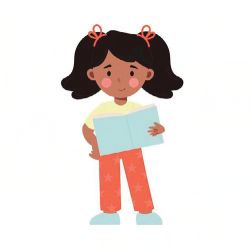Interestingly, the errors made by dyslexic children are not the same errors made by beginning readers, although it may appear that way at first. As they begin to read whole paragraphs or pages of a book or short story, you will see a myriad of unusual reading behaviors
emerge, that are not typical of other young readers. To learn more about these reading behaviors, you might find the following resource helpful in Exceptional Parent Magazine's Archive for September 2022: "What Dyslexia Looks Like by Grade Level" at epmagazine.com/archive.
Tip #5: ADVOCATE FOR EACH CHILD
Make sure the younger siblings are tested/screened for dyslexia before they fail. This means, as early as possible, either PreK or Kindergarten. If the screening or testing finds that the child has deficits associated with dyslexia, waste no time in advocating and pressing the school for an IEP (Individualized Educational Program) for this child. Without the IEP in place, there is no guarantee that your child will receive an evidence-based reading intervention that is dyslexia-specific. Instead, they are likely to receive more of the core reading curriculum that has already failed them. For more information on the IEP process, visit Dyslexia Help at the University of Michigan dyslexiahelp.umich.edu.
Stay vigilant to be sure the IEP is being followed and that appropriate accommodations are in place for tests and other challenges. An example would be spelling tests. Until your child has made significant progress in spelling, weekly spelling tests should be reduced to a few words, and grading should accommodate your child's level of progress
Certain standardized tests may also require the teacher to read the test questions orally, to give your child a fair chance at a successful outcome. Remember that the law is on your side. To learn more about your rights, visit Dyslexia Help at the University of Michigan. dyslexiahelp.umich.edu/parents/living-with-dyslexia/school/know-your-rights.
The greatest challenge in dyslexia intervention is helping each child reach grade level reading fluency norms. Fluency training provides a shortcut to gains in every reading measure, not just fluency. So, no matter what their unique dyslexia profile is, make sure that intensive fluency training is included in the intervention for each of them. This means that the intervention should include timed repeated reading, and timed repeated handwriting tasks with word lists and sentences, that are based on instruction that they have been explicitly taught. Handwriting fluency facilitates reading fluency, so timed repeated handwriting tasks are just as critical to achieving reading proficiency as timed repeated reading tasks.

Tip #6: TAKE ADVANTAGE OF NEW TECHNOLOGIES AND RESOURCES
While your children are working to improve reading proficiency, ABOUT THE AUTHOR: take advantage of the many learning resources on YouTube and audio book resources, such as Learning Ally at learningally.org. Audio books will give each child opportunities to explore their own individual interests, acquire vocabulary, and develop comprehension skills.
There are a host of assistive technologies that will make schoolwork and homework so much easier. To learn more about them, visit the Yale Center for Dyslexia & Creativity dyslexia.yale.edu/resources/tools-technology.
Again, help each child discover and focus on their strengths. Provide time every week for them to build on these strengths, which can appear in the form of a hobby, sport, academic interest, or special talent. Giving them time to develop their gifts individually will create resilience, build confidence, and improve self-esteem as they tackle and conquer reading, writing, and spelling skills.

ABOUT THE AUTHOR:

Georgie Normand, M.A. holds a Master's degree in Reading Education and has spent many years working with students with dyslexia. She is the founder of Early Literacy Solutions and the author of the Orton-Gillingham based Fluency Builders Dyslexia Program (earlylitera- cysolutions.com). Designed for parents, tutors, and teachers, the Fluency Builders program utilizes the latest neuroscience in dyslexia. These new studies found that dyslexia is not a one-size-fits-all learning disability. Georgie has also developed the Certified Dyslexia Practitioner Program, a professional learning program that trains teachers and tutors to identify and succeed with multiple dyslexia profiles. Contact her at georgienormand@earlyliteracysolutions.com
References
- Dyslexia FAQ. dyslexia.yale.edu/dyslexia/dyslexia-faq
- Ferrer, E., Shaywitz, B.A., Holahan, J.M., Marchione, K.E., Michaels, R., & Shaywitz, S. E. (2015). Achievement gap in reading is present as early as first grade and persists through adolescence. Journal of Pediatrics, 167(5), 1121-1125e2.
- Gaab, N. (2017). It's a myth that young children cannot be screened for dyslexia. Baltimore, MD: International Dyslexia Association. Retrieved from dyslexiaida.org/its-a-myth-thatyoung-children- cannot-be-screened-for-dyslexia/
- Gifted and dyslexic: Identifying and instructing the twice exceptional student fact sheet. Retrieved from dyslexiaida.org/gifted-and-dyslexic-identifying-and-instructing-the-twice-exceptional-student-fact-sheet
- Horowitz-Kraus, T. (2023). The role of executive functions in fluent reading: Lessons from reading acquisition and remediation. Mind, Brain, and Education. doi.org/10.1111/mbe.12357
- James, K.H. (2017). The importance of handwriting experience on the development of the literate brain. Current Directions in Psychological Science, 26(6), 502-508.
- Moats, L. Allegiance to the Facts: Best approach for students with dyslexia. Retrieved from dyslexiaida.org/allegiance-to-the-facts-best-approach-for-students-with-dyslexia
- Moran, G., (2019). As workers become harder to find, Microsoft and Goldman Sachs hope neurodiverse talent can be the missing piece. Retrieved from https://fortune.com/2019/12/07/autism-aspergersadhd-dyslexia-neurodiversity-hiring-jobs-work/
- Pagnotta, M.F., Zouridakis, G., Li, L., Lizarazu, M., Lallier, M., Molinaro, N., Carreiras, M. (2015). Low frequency overactivation in dyslexia: Evidence from resting magnetoencephalography. Engineering in Medicine and Biology Society. 37th Annual International Conference of the IEEE.
- Pennington, B.F. (Ed.) (1991). Reading Disabilities: Genetic and Neurological Influences. Kluwer.
- Raschle, N.M., Becker, B.L.C., Smith, S., Fehlbaum, L.V., Wang, Y., & Gaab, N. (2017). Investigating the influences of language delay and/or familial risk for dyslexia on brain structure in 5-year-olds. Cerebral Cortex, 27(1), 764-776.
- Ring, J., & Black, J.L. (2018). The multiple deficit model of dyslexia: What does it mean for identification? Annals of Dyslexia. https://doi.org/10.1007/s11881-018-0157-y
- Ryan, M. (2023). Teaching fish to climb trees. Retrieved from Ryan, M. (2023). Teaching fish to climb trees. Retrieved from http://dyslexiahelp.umich.edu/dyslexics/letter-from-dr-ryan/teaching-fish-to-climb-trees
- West, T.G. (2004). Thinking like Einstein. Globe Pequot/Prometheus.
- Wilson, A.J., Andrewes, S.G., Struthers, H., & Waldie, K.E. (2015). Dyscalculia and dyslexia in adults: Cognitive bases of comorbidity. Learning and Individual Differences, 3, 118-132.
- Wolff, P.H., & Melngailis, I. (1994). Family patterns of developmental dyslexia: Clinical findings. American Journal of Medical Genetics, 54, 122-131.
- Young, R.A., Rose, R.V., & Nelson, R. (2015). Teaching fluent handwriting remediates many reading related disabilities. Creative Education, 6, 1752-1759